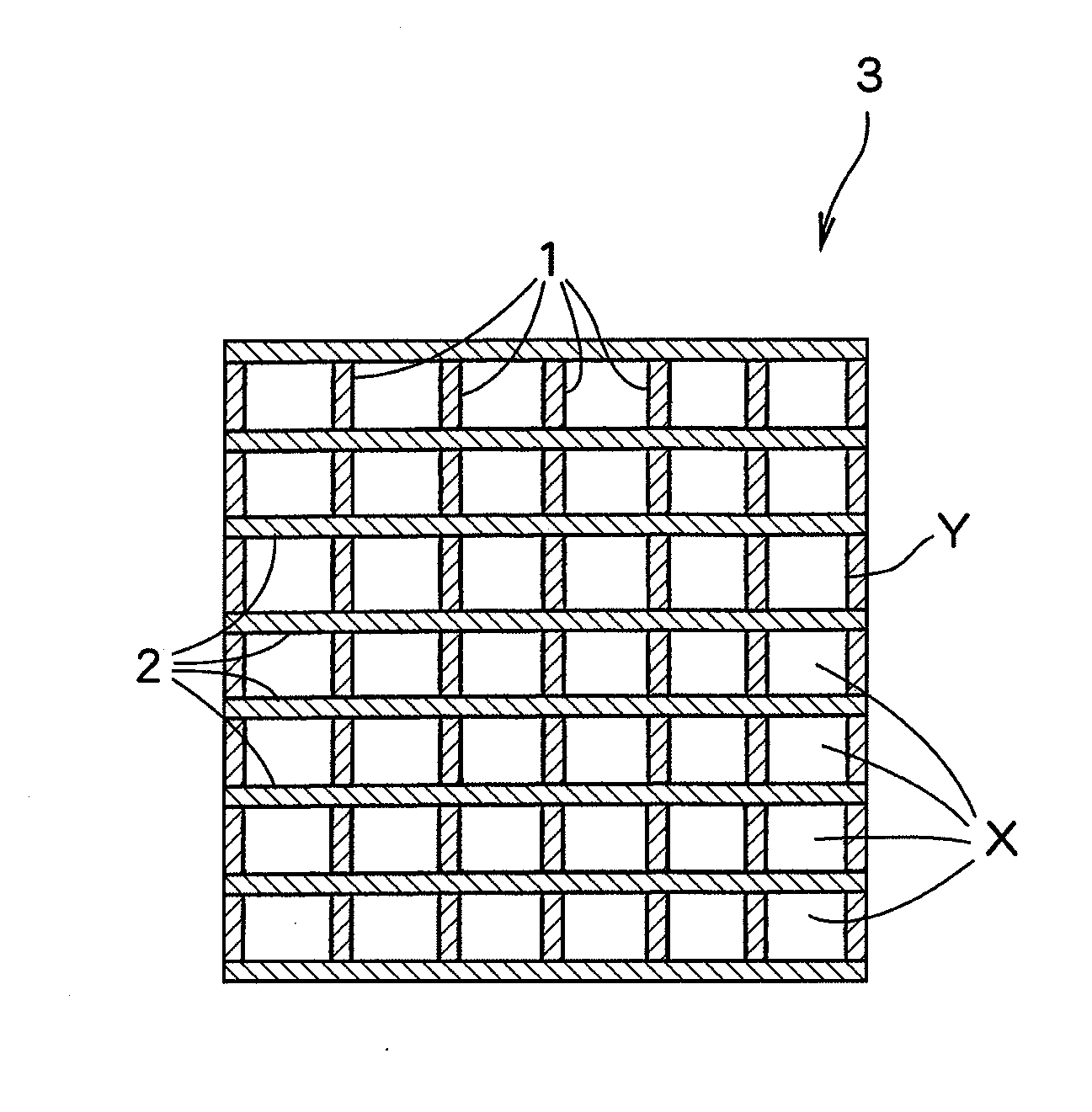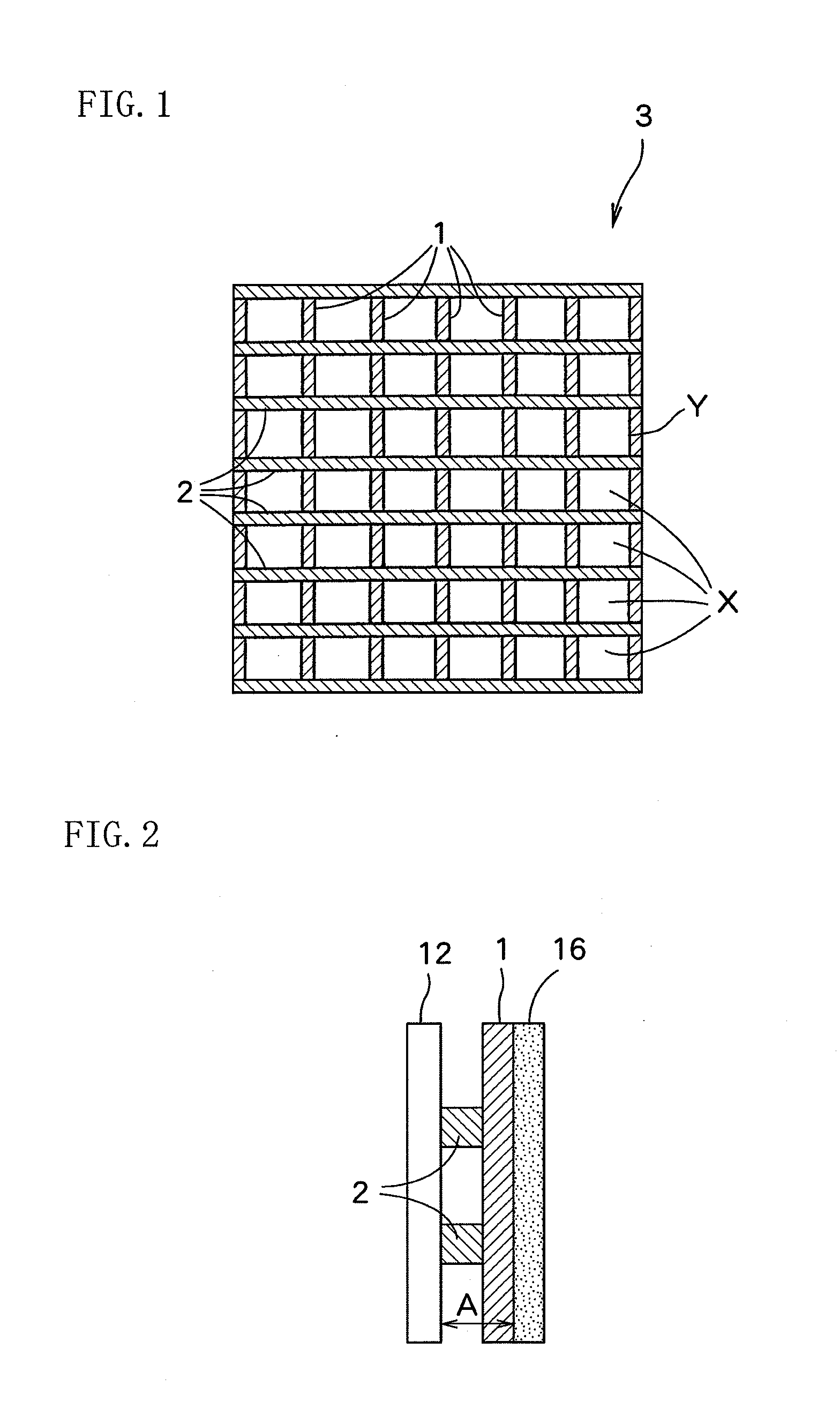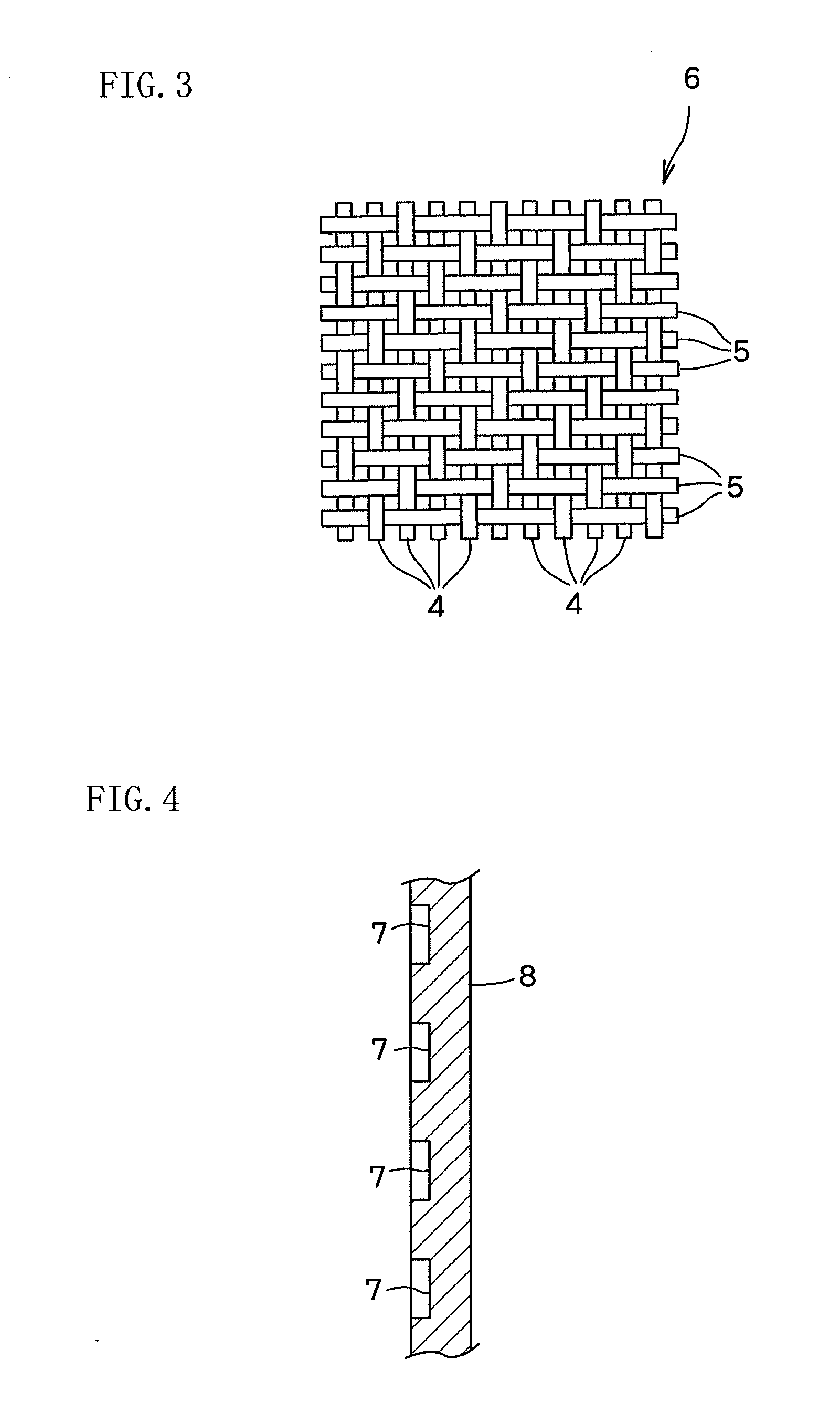Electrolytic cell for producing chlorine - sodium hydroxide and method of producing chlorine - sodium hydroxide
- Summary
- Abstract
- Description
- Claims
- Application Information
AI Technical Summary
Benefits of technology
Problems solved by technology
Method used
Image
Examples
example 1
[0064]A dimensionally stable electrode manufactured by Permelec Electrode Ltd. was used as an anode and a liquid penetration-type gas diffusion electrode manufactured by Permelec Electrode Ltd. was used as a cathode. Each of the reaction surfaces of the anode and the gas diffusion electrode was 100 mm in width and 100 mm in height, respectively.
[0065]“AciplexF-4403D” manufactured by Asahi Kasei Chemicals Corporation (trade name) was used as an ion exchange membrane. The reaction surface of the ion exchange membrane was 100 mm in width and 100 mm in height. A liquid retention layer installed between the ion exchange membrane and the gas diffusion electrode was PFA-made formed article having a thickness A of 0.2 mm and a liquid-retention amount per unit volume of 0.26 g-H2O / cm3. An electrolytic cell was assembled by putting the liquid retention layer between the ion exchange membrane and the gas diffusion electrode, and bringing the anode into contact with the ion exchange membrane.
[0...
example 2
[0067]Electrolysis was carried out in the same conditions as those of Example 1, except that the amount of brine supplied to the anode chamber was controlled so that the concentration of sodium hydroxide aqueous solution discharged from the cathode chamber in Example 1, that is, 34.5% by weight was 33.0% by weight. Initial electrolytic voltage was 1.99V and current efficiency was 96.8%. No change was observed in the electrolytic voltage and the current efficiency at a 30th day from the beginning of the operation. The calcium concentration in the ion exchange membrane at a 30th day from the beginning of the operation was measured by ICP analysis, and confirmed that accumulation was 3 mg / m2 (Reference should be made to Example 1 in which it was 14 mg / m2).
example 3
[0068]Electrolysis was carried out in the same conditions as those of Example 1, except that the amount of brine supplied to the anode chamber was controlled so that the concentration of sodium hydroxide aqueous solution discharged from the cathode chamber in Example 1, that is, 34.5% by weight was 25.0% by weight.
[0069]Initial electrolytic voltage was 1.99V and current efficiency was 95.2%. No change was observed in the electrolytic voltage and the current efficiency at a 30th day from the beginning of the operation. The calcium concentration in the ion exchange membrane at a 30th day from the beginning of the operation was measured by ICP analysis, and confirmed that accumulation was 3 mg / m2 (Reference should be made to Example 1 in which it was 14 mg / m2).
PUM
| Property | Measurement | Unit |
|---|---|---|
| Percent by mass | aaaaa | aaaaa |
| Percent by mass | aaaaa | aaaaa |
| Fraction | aaaaa | aaaaa |
Abstract
Description
Claims
Application Information
 Login to View More
Login to View More - R&D
- Intellectual Property
- Life Sciences
- Materials
- Tech Scout
- Unparalleled Data Quality
- Higher Quality Content
- 60% Fewer Hallucinations
Browse by: Latest US Patents, China's latest patents, Technical Efficacy Thesaurus, Application Domain, Technology Topic, Popular Technical Reports.
© 2025 PatSnap. All rights reserved.Legal|Privacy policy|Modern Slavery Act Transparency Statement|Sitemap|About US| Contact US: help@patsnap.com



